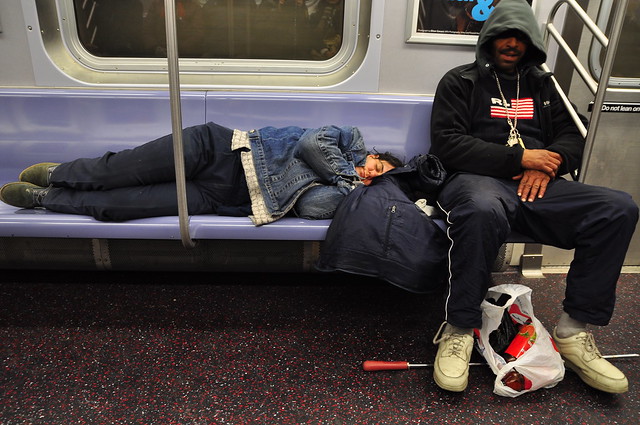
Staten Island express buses that venture into Manhattan remain on the BusTime tracking map.
Updated (2:15 p.m.): After years of stops and starts, some false hopes and finally a successful pilot program along Brooklyn’s 5th Avenue, New York City Transit has debuted BusTime, its real-time bus tracking program, throughout Staten Island. Although the debut is technically 11 days late, the devil is in the details. It’s taken the MTA far too many years to get this right, but the widespread rollout of such a tracking application should change the way New Yorkers relate to the bus system.
“Bus Time is going to transform the way that our 2.5 million bus riders use the bus system every day, and we’re thrilled to start here on Staten Island,” MTA Chairman Joseph J. Lhota said. “The MTA continues to bring new technology to our customers in ways that make our transit system better every day. With Bus Time you can get real-time information right on your cell phone or computer.”
The Staten Island implementation, which is officially live at MTA’s BusTime Page, is similar to the one in place along Brooklyn. Users can search for a bus route or intersection to see where buses are along the line. Additionally, riders may text a bus stop code or intersection to 511123 to receive tracking information, and soon, bus poles and shelters on Staten Island will come equipped with QR codes as well.
I’ve spent some time poking around with the Staten Island implementation, and I’m excited to see what this can do for bus ridership. It essentially takes the guesswork out of waiting as riders can now check to see where any bus is at any given time. Hopefully, mobile app developers will make good use of the plethora of data that will come out of BusTime as well. It should make it easier for potential riders to decide between a bus and a car ride.
There is also an intriguing citywide element to SI’s BusTime as well. As Chris O’Leary pointed out to me, the tracking for X1, an express bus that services Manhattan, works throughout the route. In other words, the MTA has developed a GPS-based bus tracking system that works in Manhattan. That had long been one of the supposed sticking points that held up such a tracking system.
The MTA hopes to roll out a city-wide system by the end of 2013. For more on the technology behind BusTime, check out my post on the topic from last February. “We’ve taken a new approach by using already existing off-the-shelf components and tailoring open standards and software,” Transit President Thomas Prendergast said. “The benefit of this in-house, open-design approach allows the MTA more freedom to purchase equipment from several different suppliers and adapt to new technology allowing us to roll out this important communications tool to our customers at a much lower cost.”


 New Yorkers of a certain age remember a then-ubiquitous television ditty from the early 1980s. “Take the train, take the train to the plane,”
New Yorkers of a certain age remember a then-ubiquitous television ditty from the early 1980s. “Take the train, take the train to the plane,” 















 (Rockaway Shuttle)
(Rockaway Shuttle)